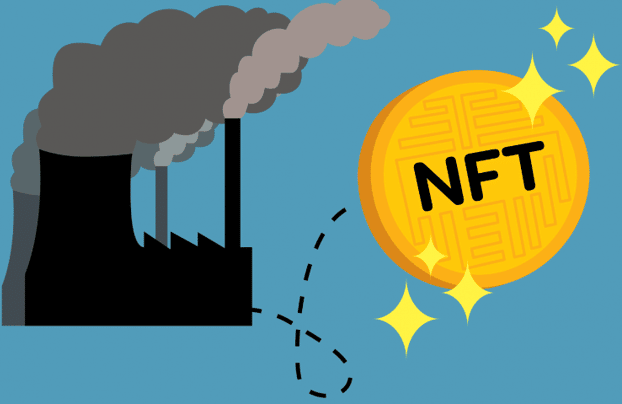Why do NFTs use so much Energy?

You must have heard about NFTs (Non-Fungible Tokens) and their impact on the environment. NFTs and energy consumption are important topics of discussion today. The impact of NFTs on the environment is linked to how they are produced. The process of creating an NFT is very energy intensive.
So, why do NFTs use so much energy?
The high NFT energy consumption can be attributed to the fact that most NFTs are created using the Proof of Work (PoW) mechanism. Energy-intensive processes generate and release excessive carbon dioxide into the environment. The NFT carbon footprint is estimated to be about 211kg, which is equivalent to driving 1000km on petrol.
However, there still exists environmentally friendly ways of minting NFTs, particularly those using the Proof of Stake mechanism. Thus, how NFTs are minted determines whether they will harm the environment or not.
Minting an NFT using the Proof of Work (PoW) mechanism consumes a similar amount of electricity as an American household for about 9 days. However, NFT buyers and sellers are finding different ways to tackle the issue of NFTs and energy consumption, one of them being the use of alternative consensus mechanisms other than PoW.
What is the Carbon Footprint of an NFT?

The NFT carbon footprint refers to the total amount of greenhouse gases, including methane and carbon dioxide, generated by NFT activities. On average, the NFT carbon footprint for a single NFT stands at about 211kg in carbon dioxide.
It’s worth noting that it is difficult to get a precise estimate of the NFT carbon footprint because it keeps on changing and very little research has been done about it. The available information only gives a ballpark figure but it is big enough to raise concerns about NFTs and energy consumption.
The most famous study about NFT energy consumption was done by Memo Atken, an artist and programmer. Atken analyzed 18,000 CryptoArt NFTs and found out that a single NFT has an NFT carbon footprint of 211kg CO2, right from minting to transactions, ownership, and more.
Read Our more NFT Guides:
However, it’s worth noting that NFTs are not the only culprits of poisonous emissions to the environment in the art industry. The transportation of artworks is also a great source of carbon emissions to the environment in the art world. Packaging materials and temporary infrastructures also bring huge damage to the environment.
As you know, NFTs are minted on the blockchain. To mint the NFT, you have to pay “gas fees” for the NFT to be added to the blockchain-distributed database and to gain ownership rights over that NFT. This process consumes a lot of energy. The reason is that for any NFT transaction to be recorded on the blockchain, cryptocurrency mining must be done. Cryptocurrency mining requires the use of special devices and computers connected. The entire process will emit carbon dioxide into the environment.
The mining process is similar to war among competing miners.
Another research by NFT Club notes that adding an NFT to the blockchain alone consumes around 83 kg of carbon dioxide. The NFT carbon footprint continues to rise even after the NFT has been mined. A bid on an NFT consumes 23 kg of carbon dioxide, a single NFT sale consumes 51 kg of carbon dioxide, and each transfer of an NFT from one person to another generates 30 kg of carbon dioxide.
The NFT Club’s research also shows that CryptoKitties NFT collection has emitted 239.83 million Kgs of carbon dioxide up to date, Art Blocks 23 million Kgs of carbon dioxide, Axie Infinity 27 million Kgs of carbon dioxide, Sorare 20.71 million Kgs of carbon dioxide, and The Sandbox 11.6 million Kgs of carbon dioxide.
How much Energy does an NFT use?
The process of creating an NFT involves converting a digital file into a token that runs on the blockchain. This process requires a lot of energy. The NFT minting process consumes around 142 kWh of energy. The calculations are done using an NFT energy consumption calculator.
The reason behind the NFTs and energy consumption is the high amount of activity that is involved in NFT minting. A group of miners competes against each other to see who mines the NFT first. This also involves people trying to solve complex calculations. This makes the NFT energy consumption too high.
How much energy does an NFT use to complete a transaction?
An NFT transaction consumes an average of 48.14 kWh of energy. NFT transactions take some time to complete. There are many activities involved among the buyers, sellers, and the NFT marketplace. The NFT transactions involve transferring the ownership of an NFT from one person to another. A lot of energy is consumed to save the new ownership information of the NFT on the blockchain.https://nftcrypto.io/
